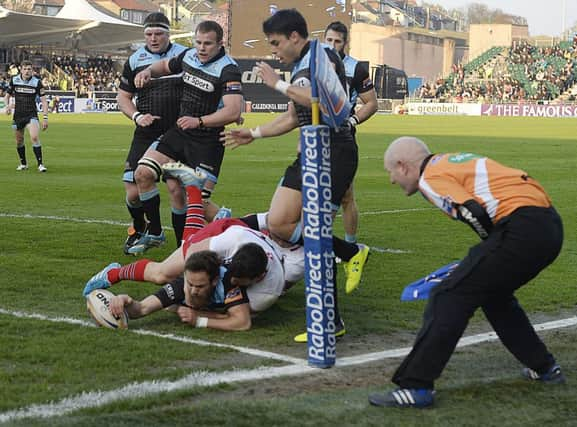Allan Massie: amateur and pro rugby contrasts


Amateurs have jobs that usually have nothing to do with rugby. Other amateurs are students studying for degrees or other qualifications. They train in their free time, usually in the evenings after work. Again the distinction is sometimes blurred since a number of amateur clubs pay match fees, while many contribute to players’ expenses. Yet, although there is a grey area, the essential difference is clear. Rugby provides a livelihood for professionals, while amateurs seek their livelihood elsewhere.
The gulf is great and is manifested on the field of play. A professional XV will be composed of full-time athletes, who are, man for man, bigger, heavier, stronger, fitter and usually faster than their counterparts in an amateur XV. Anyone who doubts this need look only at the matches played in the British & Irish Cup. When amateur Scottish clubs come up against the professional ones of the English Championship, the physical difference is almost always evident. And players in the English Championship belong only to the second-tier of the professional game in England.
Advertisement
Hide AdAdvertisement
Hide AdThe vast majority of rugby players have no ambition or desire to play professionally. Rugby is their recreation. They play for love of the game and the companionship it fosters. Almost all clubs are in the same position. They are run and kept going by amateur enthusiasts. Some may manage to employ a coach (though he will usually have a full-time job outside rugby) or a development officer. Most clubs are content with this position. They have their pride. They want to do well , to win promotion from a lower division, or to avoid relegation. They want to bring on promising players, even though they recognise that the best of them may move, or be lured, to a stronger cub in a higher division. That has always been the case. It doesn’t alter the fact that, for almost everybody concerned, rugby is an amateur game and will remain so.
The gap between even the top of the amateur game and the professional one is vast and, for years, the men at the SRU have wondered how to bridge it. Their concern is reasonable, though in truth, with only two professional clubs here, the opportunities to move from amateur to professional rugby in Scotland are very limited indeed. A few months ago they came up with plans for an elite eight-club league which should be semi-professional, although it was not clear exactly what was to be understood by this.
Semi-professionalism, or part-time professionalism, used to be quite common even in the upper reaches of football. This was possible because, in comparison with professionals today, certainly with professional rugby players, footballers then didn’t really train very hard. They certainly didn’t spend hours in the gym transforming their body shape.
So I have never been clear just what is meant by semi-professional rugby. Does it mean that players are paid to play while still having jobs outside the game. Or would these have to be part-time jobs , so that the players could spend at least half the time in the gym and on the training field that a full-time professional would spend? Or would the semi-pro clubs have a number of full-time professionals, some of them temporarily seconded from Edinburgh or Glasgow playing alongside amateurs, some of whom might in time graduate to full-time professional status?
There was another question: Who would finance the semi-pro clubs and who, indeed, could afford to do so?
When the game went open 20 years ago, and there was a fierce argument as to whether the professional game in Scotland should be based on the four Districts – Edinburgh, Glasgow, the South and the North-Midlands – or the old first division clubs, there were some very unrealistic ideas as to what it might cost to run a pro team. Now we know that it takes millions. The SRU found it couldn’t afford four professional district-based clubs. The four Welsh regions complain that they can’t manage on the £4 million or so the WRU gives them, even though they also have private finance and sponsorship. They can’t pay the salaries to keep their best players in Wales.
For the moment the proposed semi-pro league has been rejected by the clubs and not only on account of opposition from those clubs immediately below the likely elite ones, opposition reasonably based on the fear that their best players would be lured away – something that would of course have a knock-on effect. No doubt it will come back, but until the question of how to finance it without money being sucked out of the club game as a whole has been solved, it looks like a non-runner. However, when a similar proposal is next advanced, it would be nice to know just what is meant and understood by this rather vague term, semi-professional.